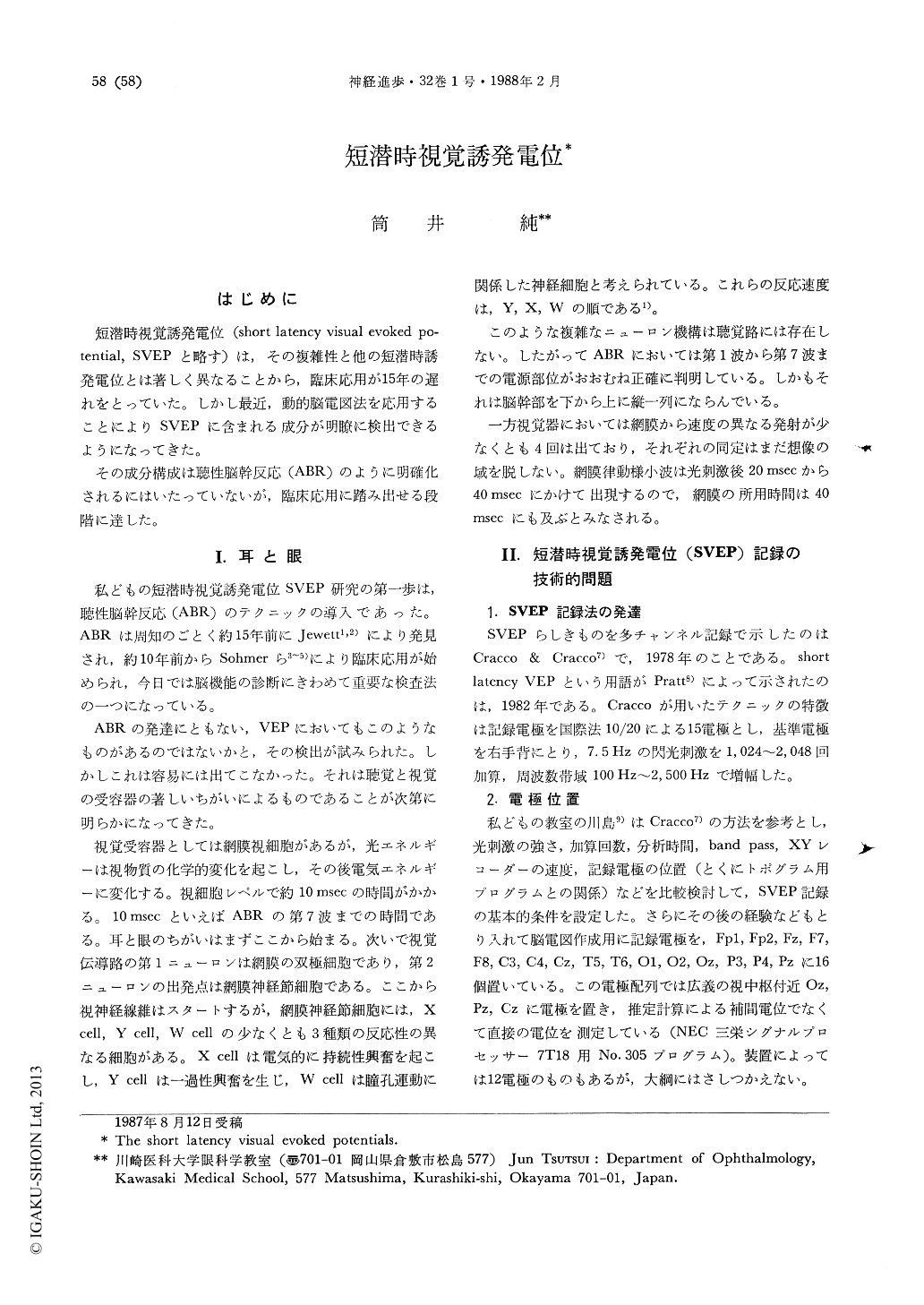Japanese
English
- 有料閲覧
- Abstract 文献概要
- 1ページ目 Look Inside
はじめに
短潜時視覚誘発電位(short latency visual evoked potential,SVEPと略す)は,その複雑性と他の短潜時誘発電位とは著しく異なることから,臨床応用が15年の遅れをとっていた。しかし最近,動的脳電図法を応用することによりSVEPに含まれる成分が明瞭に検出できるようになってきた。
その成分構成は聴性脳幹反応(ABR)のように明確化されるにはいたっていないが,臨床応用に踏み出せる段階に達した。
By means of dynamic topography and modifiedtechnique of auditory brainstem response (ABR), human short latency visual evoked potentials (SVEP) induced by 8 Hz photic stimulation are detectable on the scalp. The main components of SVEP are consisted with retinal oscillatory potentials (20msec-40msec after flash), optic pathway and brainstem potentials (25msec~60 msec after flash), and occipito-parietal potentials (40msec~70msec). The optic pathway and brainstem potentials are represented by N40 and P50 components showing a specificity of brainstem potentials. The N40 starts from the 4th oscillatory potential of the retina and it moves from the frontal to the parieto-occipital area including brainstem focus. P50 component indicates a specificity of brainstem potential and it is considered that the P50 has some relationship with the pupillary light reflex.

Copyright © 1988, Igaku-Shoin Ltd. All rights reserved.


